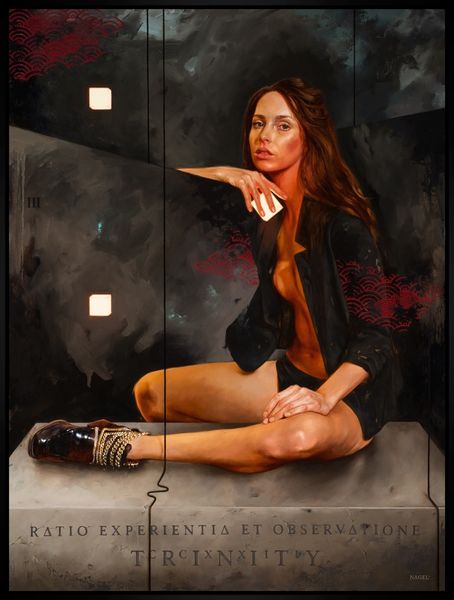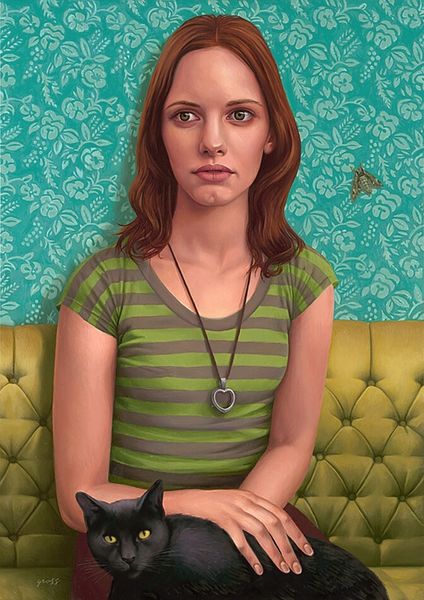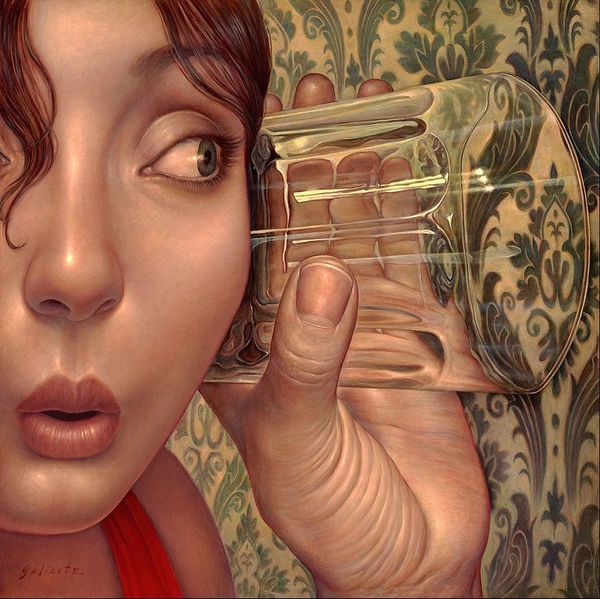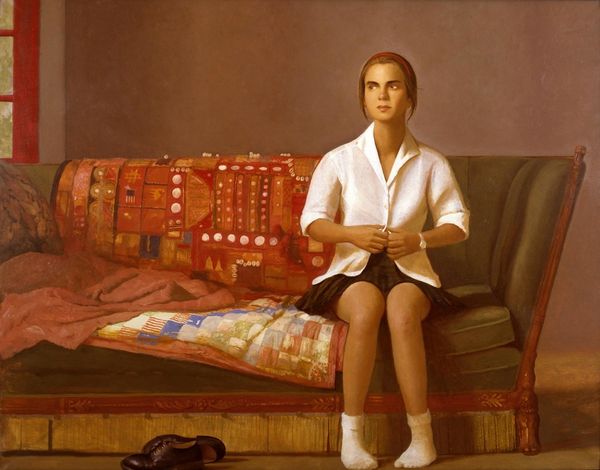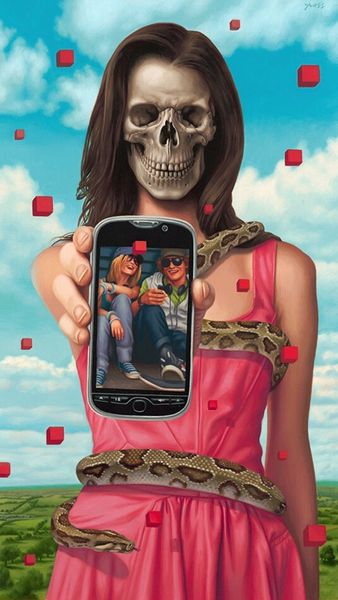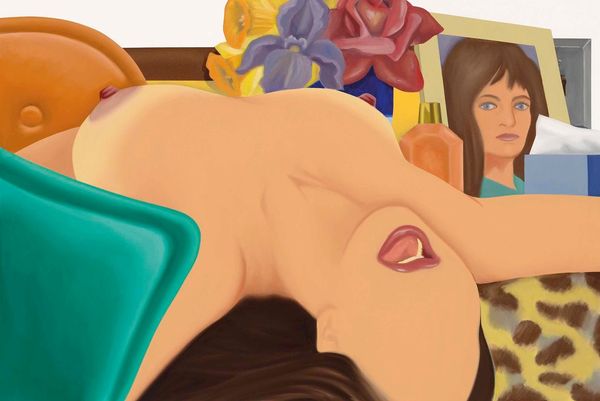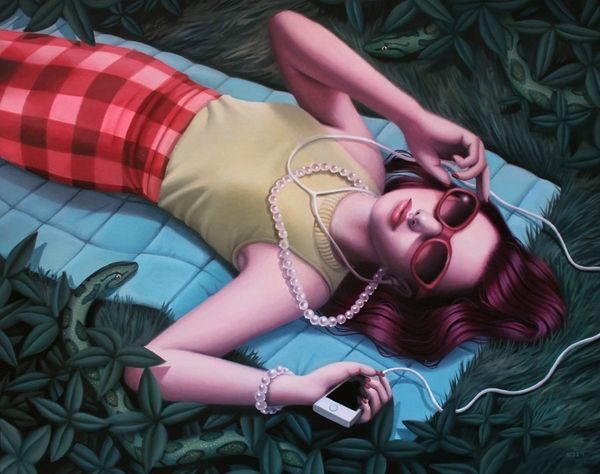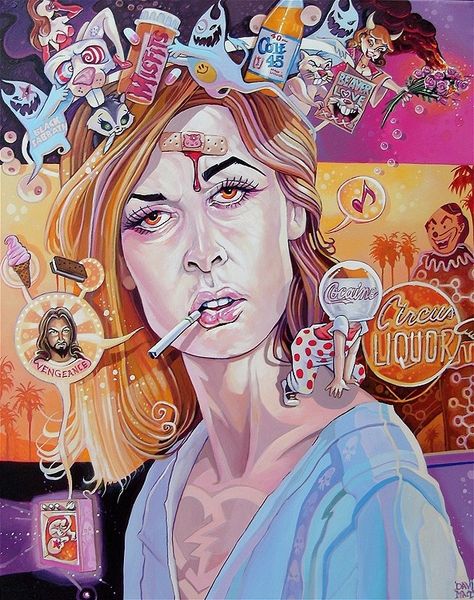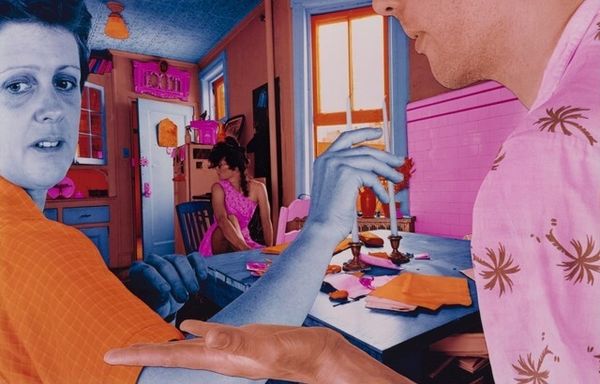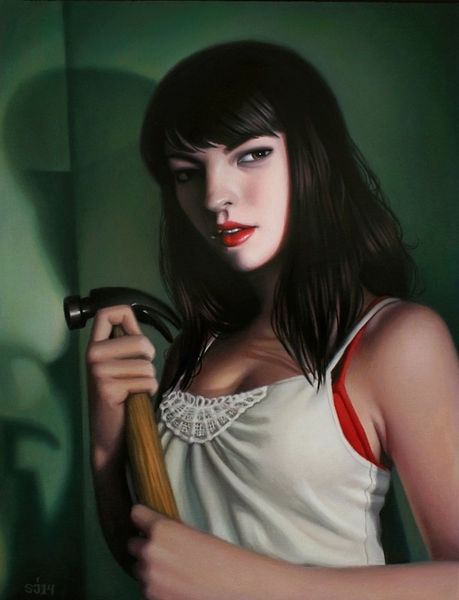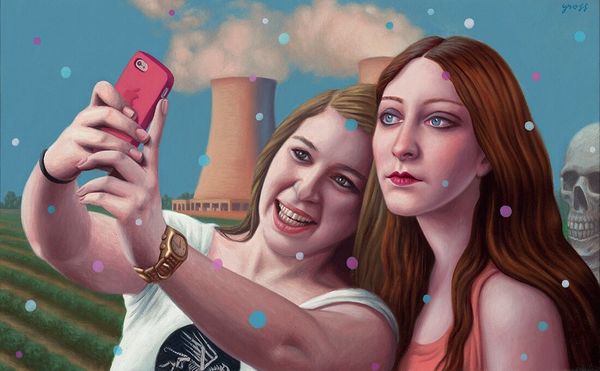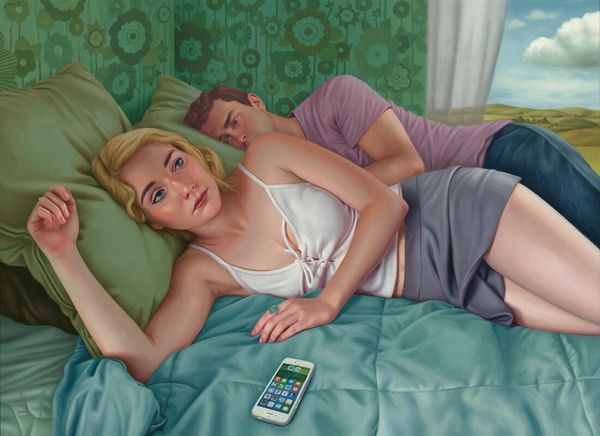
painting, oil-paint
#
portrait
#
figurative
#
contemporary
#
painting
#
oil-paint
#
figuration
#
vanitas
#
modernism
#
realism
Copyright: Modern Artists: Artvee
Curator: Today, we’re looking at "Mirror," an oil painting by contemporary artist Alex Gross. Editor: My first impression? An odd calmness pervades the image, despite the slightly unsettling combination of elements. There’s a stillness to the figure that’s amplified by the clean lines and smooth surfaces, particularly the mobile phone, rendering its color all the more vibrant in relation to the rest. Curator: Absolutely. Gross's work often critiques our digitally saturated culture. This painting, I believe, addresses our obsession with technology as a reflection of self, or perhaps a warped distortion of reality. The phone practically becomes a mirror in the subject's hand, as if documenting oneself constantly is a modern ritual, mirroring older portrait traditions. Editor: It’s interesting how the formal composition emphasizes that distortion, like a new form of realism, where the glow of screens reshapes even the most traditional portrait setups. The cool, calculated expression on the subject, holding a vibrantly colored smartphone and a nearly-undetectable chain layered around her neck, contrasted with the looming presence of that skull is almost discordant. Curator: That skull, a potent vanitas symbol, brings in themes of mortality and transience. Historically, such symbols reminded viewers of life’s brevity. Now, in a society consumed by curated online personas, it makes us consider how fleeting those images and digital interactions really are. Do we truly connect or just create polished facades? What's our digital legacy? Editor: Exactly! The slightly out-of-focus quality of the skull draws your eye back to the stark details of the figure. The oil paint's application is remarkably even and controlled. There is minimal texture, except for the details on the skull and striped curtains, directing our focus, perhaps a conscious strategy. The contrast of sharp and smooth also helps distinguish living figure from morbid symbol. Curator: I agree. Gross’s choice to embed those art historical motifs—vanitas—within the context of contemporary life suggests a skepticism of contemporary cultural values. Perhaps this collision of eras serves as a commentary, or a warning, about what future generations will make of this era. Editor: Overall, what strikes me most is how seamlessly the composition pulls together old and new techniques, presenting them in ways that generate introspection in the viewers. Curator: Precisely. "Mirror," regardless of what era interprets it, becomes a historical marker for today’s cultural norms.
Comments
No comments
Be the first to comment and join the conversation on the ultimate creative platform.

